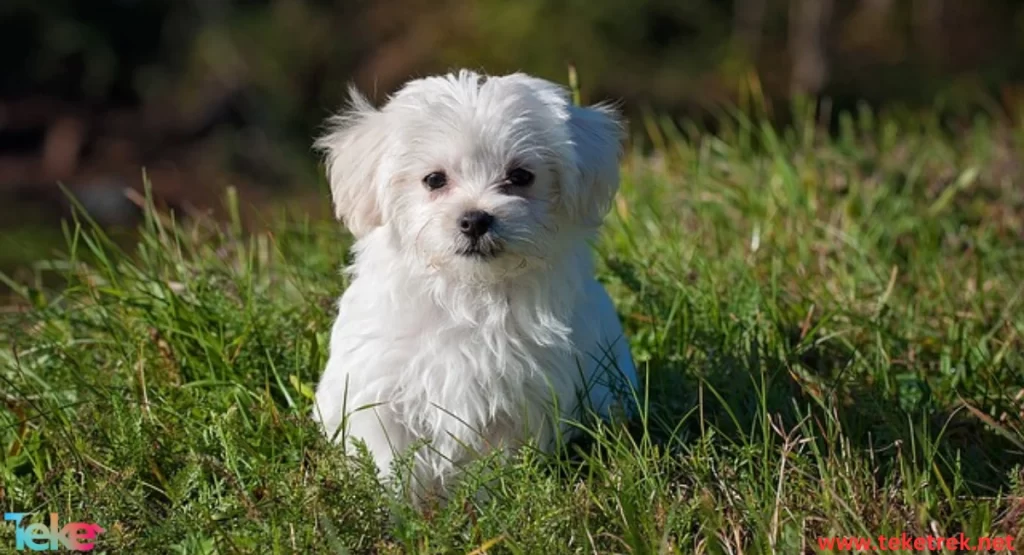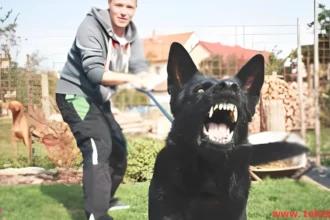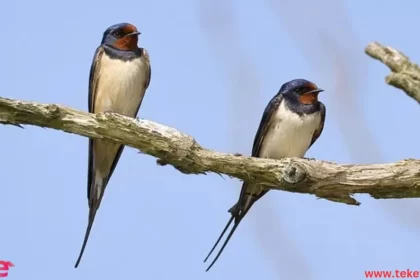The Maltese Dog belongs to the island of Malta and is named Maltese dogs after the island of Malta located south of Sicily. In this article in TekeTrek Website, we will introduce you to the most important information related to this object. Follow along with us.
Facts about The Maltese Dog
- Maltese dogs are characterized by their attractiveness and charming beauty; they are one of the most elegant and gentle types of dogs in the world due to their soft fur and small size.
- Maltese dogs are very beloved pets, they thrive on love and great care as they are extremely playful and excessively active.
- If a Maltese dog feels that its owner is in danger or threatened, it will bark and try to use its teeth to protect them.
- Maltese dogs are intelligent and clever, capable of performing many tricks and complex commands.
- It loves rope toys, balls, exercise and walks.
- Maltese dogs are energetic and may be at risk from other dogs or entering dangerous places.
- Maltese dogs are known to bark a lot and loudly, so it is important to train them to reduce barking.

What does a Maltese dog look like
- Body:
Maltese dogs have a sleek body.
- Fur:
covered with white fur that looks like a thick, silky snow coat, giving them an elegant appearance.
Maltese dogs are known for the density and sheen of their fur, which does not have wrinkles like some other dog breeds.
- The weight:
The weight of the Maltese dog ranges from 3 to 4 kg.
- The length:
Its length is about 20 to 25 cm.
- Neck:
Maltese dogs have a neck covered with dense hair that is straight and not folded.
- Tail:
Maltese dogs have a thick tail at the base and thin at the end, it is curved and raised.
- Head:
Maltese dogs have a flat head, small nose with a black pad, and well-opened nostrils.
- Eyes:
Their eyes are round in shape and brown in color, not prominent or deep.
Types of Maltese Dogs
One of the most famous and valuable dogs types is the Maltese dog. Maltese dogs are known to be a single breed, but they have been hybridized by different parents within the breed, resulting in different types:
1. Maltipoo:
This type is a result of crossbreeding between Maltese and Poodle breeds. It is known for being obedient and not liking disturbance.
2. Maltese Shih Tzu:
This dog adapts quickly to its surroundings and has dense and beautiful fur that makes it attractive.
3. Malshi Dog:
This type is a hybrid between Maltese and Shih Tzu breeds, known for its love of play, bravery, and energy.
4. Morkie Poo:
A mix of Maltese and Yorkshire Terrier breeds, characterized by extreme shyness and extreme friendliness.
5. Maltese Eagle Dog:
A hybrid between Maltese and Beagle breeds, with shiny, short fur in white, brown, and black colors.
6. Maltichon:
A mix of Maltese and Bichon breeds, known for its extreme sensitivity and dislike of rough handling.
7. MaltiPug:
Very intelligent, cute, and beloved, but may suffer from respiratory problems.

What is the food for Maltese dogs?
Due to their sensitivity, it is important to follow several tips to create a suitable meal for them:
Include beef or chicken meat in the Maltese dog’s diet along with salmon fish.
Canned food for Maltese dogs should be soy-free and rich in minerals and vitamins.
Avoid feeding Maltese dogs any colored or artificial food as it may affect their sensitivity.
Breeding stages in Maltese dogs
Breeding occurs when Maltese dogs reach sexual maturity at six to eight months old.
Females can get pregnant twice a year, giving birth to 2 to 5 puppies each time.
During pregnancy, they need a diet rich in protein like yogurt, meat, and milk.
How to care for Maltese dogs
Determine food quantities based on age, activity level, and movement.
Maintain personal hygiene by trimming nails, combing fur, and cleaning eyes and ears to prevent infections.
Engage in physical exercise to prevent obesity as Maltese dogs prefer movement and activity.
Common Health Issues in Maltese Dogs
Maltese dogs are generally healthy, but they can suffer from common health problems that owners should watch out for. One of the most frequent issues is dental problems, such as tartar buildup or cavities. Because of their small mouths, extra care is needed for teeth cleaning. Maltese dogs may also experience eye issues like conjunctivitis or cataracts. Additionally, they can face respiratory problems due to their short noses. Regular vet checkups are crucial to maintaining their health.
Training Maltese Dogs
Maltese dogs are intelligent and can be trained relatively easily. However, they respond best to gentle and consistent training methods. Since they tend to be sensitive, harsh training can cause anxiety. Training should focus on positive reinforcement with rewards and encouragement. From housebreaking to basic commands like “sit” and “come,” Maltese dogs can learn quickly when motivated correctly.
Socialization of Maltese Dogs
Socialization is key to raising well-rounded Maltese dogs. Being social animals, they need early interaction with people and other pets. Exposing them to new environments and different individuals helps them develop into stable, confident dogs, reducing the risk of fear or aggression. Proper socialization ensures that Maltese dogs can adapt easily to everyday life without stress.
Grooming Maltese Dogs
Maltese dogs require consistent grooming to maintain their health and appearance. Their long hair needs daily brushing to prevent tangles and matting. Without proper grooming, they may suffer from skin issues. Regular baths with appropriate shampoos are essential for maintaining cleanliness. Additionally, their nails and ears require attention to keep them in good condition. Regular grooming ensures that your Maltese dog stays happy and healthy.
Maltese Dogs in Popular Culture
Maltese dogs are widely recognized in popular culture, often due to their small size and adorable looks. They have appeared in numerous movies and TV shows, capturing the hearts of audiences. Their popularity extends to social media, where they are frequently featured by influencers and pet enthusiasts. This exposure in culture has contributed to their growing popularity as a beloved pet.
Maltese Dogs and Allergies
Maltese dogs are considered hypoallergenic compared to many other breeds, making them a good option for people with allergies. Their coats do not shed as much as other breeds, reducing the amount of hair in the environment. This feature can be especially beneficial for allergy sufferers, as it helps minimize allergic reactions, making the Maltese a preferred choice for those with sensitivities to pet dander.
The Maltese dog history
The Maltese dog is one of the oldest toy breeds, with a rich history that dates back over 2,000 years. Originating in the Mediterranean island of Malta, these dogs were cherished by the ancient civilizations, including the Romans, Greeks, and Egyptians. Historical records show that Maltese dogs were prized for their elegance and were often kept as companions by royalty and nobility. In fact, they were depicted in ancient art and literature, underscoring their status as luxury pets. Over the centuries, the breed’s popularity spread across Europe, with many aristocratic families adopting them as companions. The Maltese’s affectionate nature, intelligence, and charm contributed to their sustained appeal. Despite changes in dog breeding practices, the Maltese has retained its status as a symbol of refinement and elegance throughout the ages.
How to Care for a Maltese Dog’s Coat
The long, silky coat of the Maltese dog is one of its most striking features, but it requires regular care to maintain its beauty. Daily brushing is essential to prevent tangles and mats, which can cause discomfort to the dog and even lead to skin issues. Using a high-quality comb or brush designed for long-haired breeds helps keep their fur smooth and free of knots. In addition to brushing, Maltese dogs need regular baths to keep their coats clean and shiny. However, it’s important to use gentle, dog-specific shampoos to avoid drying out their skin. Regular trimming is also recommended to prevent the hair from growing too long and obstructing the dog’s vision. Additionally, trimming around the eyes and paws helps maintain both cleanliness and comfort. While the coat may require significant maintenance, proper grooming not only ensures that the dog looks its best but also promotes its overall health by reducing the risk of skin infections or irritations.
Maltese Dogs and Their Bond with Owners
Maltese dogs are known for forming strong emotional bonds with their owners. They are affectionate, loyal, and thrive on human companionship, making them excellent pets for families or individuals seeking a close relationship with their dog. Because of their affectionate nature, Maltese dogs often follow their owners around the house and enjoy being in their presence at all times. They tend to develop a strong attachment to their primary caregiver and may become anxious if left alone for long periods. The Maltese is a social dog that enjoys attention and interaction, and they frequently seek affection through cuddling or sitting on their owner’s lap. This breed is particularly attuned to the emotions of their owners, often providing comfort and companionship when their human companions are feeling down. Their gentle nature and eagerness to please make them an ideal choice for those seeking a loving and devoted companion who enjoys sharing close moments with their family.
Maltese dog temperament and Common Behavior Issues
While Maltese dogs are generally well-mannered, they can exhibit a few common behavioral issues that owners should address. One frequent problem is excessive barking. Maltese dogs tend to be alert and may bark at unfamiliar noises or when they want attention. Training them to respond to a “quiet” command and providing positive reinforcement can help curb this behavior. Another common issue is separation anxiety, as the Maltese breed tends to form close bonds with its owners. They may become anxious or destructive when left alone for extended periods. Gradually increasing the time spent alone and providing interactive toys or puzzle feeders can help alleviate this anxiety. Additionally, Maltese dogs can sometimes display possessive behavior, especially if they feel their territory or toys are being threatened. Establishing clear boundaries and teaching them to share can prevent such issues. With patience and consistent training, most behavioral problems can be addressed effectively, ensuring that your Maltese remains a happy and well-adjusted companion.
Ideal Sleep Times for a Maltese Dog:
Sleep is an essential component of a Maltese dog’s life, playing a major role in their psychological and physical development. Typically, an adult Maltese dog needs between 12 and 14 hours of sleep per day, while a puppy may sleep up to 18 hours. This amount varies depending on daily activity and the level of mental and physical stimulation the dog is exposed to. It’s best for a Maltese dog to have a quiet, stable sleeping place, away from noise or sudden movements. Routine helps them feel secure, reducing stress and anxiety. The quality of their bedding should be considered, preferably soft and supportive for their spine. It’s also recommended to keep the room at a moderate temperature, as the Maltese dog has relatively light fur and can easily get cold.
If you notice that your dog is sleeping too much or too little, this could be a sign of a health or psychological problem, and it’s advisable to consult a veterinarian.
The Best Toys for Maltese Dogs:
The Maltese is an intelligent and active dog that needs mental stimulation as much as physical activity. The best toys for them include:
- Interactive toys, such as puzzle toys that hide food inside, which stimulate their thinking and satisfy their hunting instincts.
- Small balls designed for small dogs, as Maltese dogs love to run after and retrieve them.
- Cotton ropes that can be pulled or chewed without harm.
- Gentle chew toys that help clean their teeth and relieve stress.
- Toys that make soft sounds that stimulate their curiosity and motivate them to interact.
It’s important to rotate toys regularly to avoid boredom and encourage continuous exploration and interaction.
How Often Does a Maltese Dog Need a Bath?
The Maltese dog’s hygiene is essential due to its long, white coat, which can easily become dirty. Generally, it is recommended to bathe it once every 3 to 4 weeks. However, this varies depending on its activity level, habitat, and health condition. Dog owners should use a dog shampoo specifically formulated for dogs to avoid skin irritation. Drying the dog thoroughly after each bath is essential to avoid catching a cold. Over-bathing can strip the dog’s skin of its natural oils, leading to dry skin and fur loss.
When should you take your Maltese to the vet?
Regular veterinary visits are crucial, even if there are no signs of illness. It is recommended to have your Maltese dog examined at least twice a year to monitor its overall condition and update its vaccinations. You should also consult your vet immediately if you experience any unusual symptoms. Some of these symptoms include:
- Loss of appetite or weight.
- Persistent lethargy.
- Coughing or difficulty breathing.
- Frequent vomiting or diarrhea.
- Excessive itching or shedding.
Close monitoring of the dog’s behavior is essential, as it makes it easier to detect any changes early, facilitating treatment and increasing the chances of recovery.
Does the Maltese dog like to be alone?
No, the Maltese dog does not prefer to be alone for long periods. They are a highly social dog, emotionally attached to their owner, and love constant interaction. Leaving them for long periods without human presence or mental stimulation can lead to psychological disorders such as anxiety or destructive behaviors such as chewing on furniture. If they must be left alone, it is best to provide a playful environment and establish a daily routine that helps them adapt. Surveillance cameras or voice interaction apps can help them feel secure during their absence.
Maltese dog food cost per month:
The cost of Maltese dog food varies depending on the type and quality of the food. Generally, costs can be categorized as follows:
- High-quality dry food, ranging from $30 to $60 per month.
- Wet or home-cooked food, which can cost up to $70 per month or more, depending on the ingredients.
It is also recommended to choose a food that contains high-quality proteins and is low in grains and artificial ingredients. You can consult your veterinarian to determine the optimal diet based on your dog’s age and health condition.
Can a Maltese dog be potty trained?
Yes, it is easy to potty train a Maltese dog due to its intelligence and good response to positive reinforcement. It is also best to start training at an early age, relying on routine and rewards.
The training steps include the following:
- Establish fixed places for toileting.
- Reward the dog immediately after successful use.
- Avoid punishment, as this may cause confusion and fear.
- Be patient and consistent in your guidance.
Consistency is the most important factor in successful training, and the process can take several weeks, depending on the situation.
Does a Maltese dog need daily walks?
Yes, daily walks are essential for a Maltese dog to maintain its physical and mental health. A dog needs 20 to 30 minutes of daily walks, divided into two sessions if possible. Walking not only improves its physical fitness but also helps release energy and reduce stress. Furthermore, walking provides opportunities for interaction with other dogs, which enhances its social behavior and prevents it from becoming withdrawn.
Signs that a Maltese dog is ill
Because a Maltese dog cannot express itself verbally, observing its behavior is the primary way to detect any health problems. The most prominent signs include:
- A sudden change in appetite or weight.
- Unusual lack of activity and lethargy.
- Changes in urine or stool color.
- Labored breathing or frequent coughing.
- Redness in the eyes or ears.
- Frequent scratching or excessive shedding.
- Persistent barking for no apparent reason.
If you notice any of these symptoms, you should not be careless and should immediately see a veterinarian for the necessary tests.
FAQ
- How much is a Maltese dog?
$600 – $2340.
- How much sleep do Maltese need?
Adult Maltese dogs from the age of 1 to 7 years old sleep approximately 12 to 14 hours in a 24-hour day.
- Is Maltese a good family dog at home?
Yes, Maltese dogs are known for being affectionate, friendly, and playful. They usually get along well with children and other pets, making them a good choice for families. However, because they are small and delicate, it’s important to supervise interactions with very young children to avoid accidental injury.
- Can a Maltese be left alone all day?
Maltese dogs, like most small breeds, do not enjoy being left alone for long periods. They can suffer from separation anxiety if left alone all day regularly. Ideally, they should not be left alone for more than 4–6 hours. If you’re away for longer, consider a dog walker or pet sitter to keep them company.
- Does a Maltese bark a lot?
Maltese dogs can be prone to barking, especially when they’re excited or want attention. However, with proper training and socialization, their barking can be controlled. They might bark at new people, other animals, or when they’re feeling playful or anxious.
- Can a Maltese live 20 years?
Yes, Maltese dogs have a relatively long lifespan compared to other breeds. On average, they live around 12 to 15 years, but it is possible for them to live up to 18 or even 20 years with good care, proper diet, and regular vet visits.
In conclusion, Maltese dogs are a favorite breed for many people, We recommend you to buy one of them.






